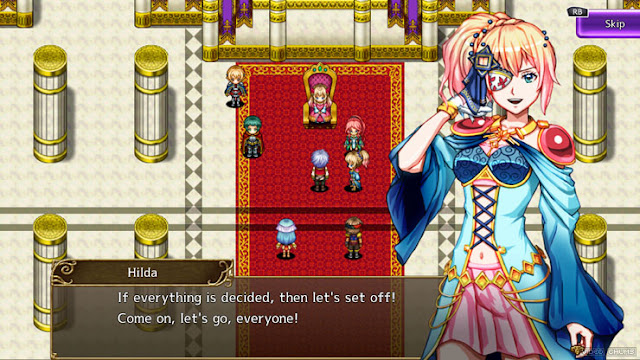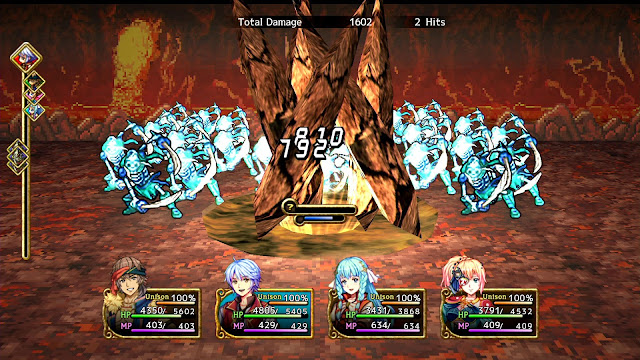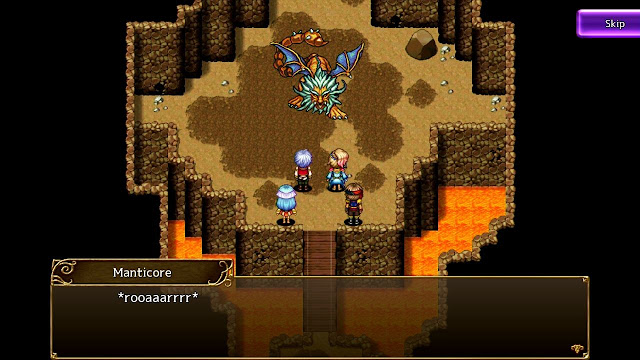I have been pretty hard on Kemco’s JRPGs in the past. They get churned out at such an intense rate that it’s hard not to be annoyed by the amateurish nature of them. If the developers just spent time working on the narrative to deliver something original, upgrading the environments to something beyond what you can achieve with RPG Maker, and working on the balance of the combat, they could actually deliver something of genuine quality. Many JRPG fans love the classics and love nostalgic throwbacks to them, and it’s hard not to feel that Kemco’s being a bit cynical in cashing in on that by churning through new releases with a minimal creative effort.
That this is all true is especially frustrating since Kemco has its moments. Yodanji is a genuinely good little roguelike, and while it’s not a JRPG, Raging Loop shows that Kemco is happy to back a good story (a really good one) when it wants to. Those games as context only make the rest of these RPG Maker-likes all the more frustrating.
And yet, as hard as I’ve been on the games, it’s also undeniable that Kemco has an audience for them (else Kemco would no longer be making games). In playing Liege Dragon I’ve tried to put myself in that audience’s shoes. I’m at the point that I genuinely want to understand the appeal of Kemco. This game’s feature set includes lines like “Enemies have weak points. You can gain an advantage by reducing enemies’ Mental Gauges! With items you can gain from bosses during the adventure, even avoiding attacks becomes possible!” and as a JRPG fan, it’s hard not to look at the claims that “weak points” and the ability to “avoid attacks” are features worth highlighting and not want to understand the appeal of something so utterly derivative. The plot is about a young man who wakes up with amnesia (really) only for the village that found and revived him to be immediately destroyed (really) by an evil lord… who also happens to be a dragon (really). There are so many layers upon layers of derivative tropes here that anyone reasonably familiar with the genre has played this game dozens of times before. So, again, what is the appeal of it?
1) They are utterly mindless. I know that sounds like a weird thing to list as a positive, but I believe Kemco works on the principle that the turn-based JRPG gameplay loop is fundamentally entertaining (and fair enough, it is). Kemco’s games are built around delivering a near endless sequence of these combat moments without making players think in the process. Dungeons are mindless paths to follow, combat is never hard nor an excessive grind because you might need to think then. Nothing about the combat systems rock the boat, because if they did, players might need to concentrate to understand them.
Most importantly, Kemco’s games seem to work on the premise that the narrative needs to be kept simple and so familiar that you don’t need to pay attention to it to follow it, because otherwise players might be drawn out of the hypnotic loop of turn-based JRPG battles. Liege Dragon, like Kemco’s other JRPGs, allow players to go through the motions of a comfortably familiar and enjoyable process (turn-based JRPG combat), and it’s precisely for that reason that they’re so derivative, and yet also specifically for genre fans. Not everyone wants to play something deep and insightful all the time, and when you’re on the train for the commute, or deep into the beers on a Friday afternoon, a game like Liege Dragon starts to look a lot more approachable than something philosophical.
3) They get the important bits of the presentation right. The music in Liege Dragon is terrible (and, I think it may have been music taken from previous Kemco titles? If not, “Kemco generic” music is a thing, and this game is full of it). The maps – overworld, towns, and dungeons – are pure RPG Maker stuff. But Liege Dragon does get the character designs right, especially the princess character, who in this game dresses up in a warrior wearing the most tantalising costume… she has real, genuine sexy princess thing going on (see below – a belly-button-revealing corset AND a frilly pink ultra mini-skirt? Hallelujah!). Even more importantly, the enemy sprites in combat are excellent. Liege Dragon represents enemies as hordes that slowly whittle down as you remove their health, and while there’s no in-game impact in facing down a horde as opposed to one or two just before the enemy is defeated (they don’t get weaker the fewer of them there are, for instance), the visual effect is neat.
As I mentioned above, the entire appeal of Kemco JRPGs is that little combat loop, so having characters that are memorable (and since their narrative role isn’t memorable, the art design needed to be), and enemy sprites that are appealing are in service of that core quality.
 |
| (Screenshot taken from Video Chums, because I wanted this specific character portrait and it was surprisingly hard to find from official sources. You’d think that the publisher would want to broadcast something that sexy everywhere. Anyway, please give them a visit) |
Do I feel bad about being hard on Kemco JRPGs? Not really. I mean, I do know work went into them and it’s never nice to go hard on someone’s work, but it’s also very churn-standard work and if anyone in the development team involved in these games genuinely believes that they’ve created some high-quality art, then I’d suggest they should consider moving into enterprise software instead (Please continue giving us sexy princess art in Excell or Word or Salesforce). However, with Liege Dragon I have finally come to an understanding with Kemco games. They do have a place and role to play, do what they aim to competently, and it’s even worthwhile in that context.
I will also say that I have enjoyed Liege Dragon more than some of the others from Kemco, too. There is a more solid narrative to it, and I really like the visual design of that combat system. Though, being entirely honest here, it was probably the sexy princess that got it over the line for me. That really is one very inspired costume design.
Editor-in-Chief
Find me on Twitter: @mattsainsb
The critic was provided with a copy of this game for review.










